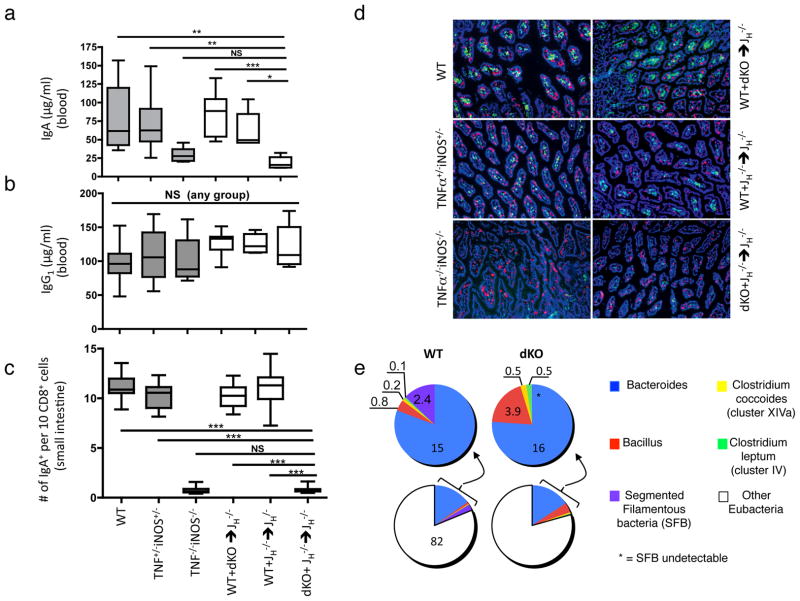Figure 3. Reduced IgA production and altered commensal flora composition in iNOS/TNFα double-deficient mixed chimeric mice.
a–b, Steady-state serum IgA, but not IgG1 levels are markedly decreased in dKO and dKO mixed chimeras. Serum IgA and IgG1 levels were measured by ELISA in WT (n = 15) TNF+/−iNOS+/− (n = 12) and TNF−/−iNOS−/− (dKO, n = 7) non-chimeric mice as well as in WT + dKO (n = 8), JH−/− + WT (n = 5) and JH−/− + dKO (n = 6) mixed chimeric mice. Similar results were obtained with two additional batches of mixed bone marrow chimeric mice (not shown). Data represent means and SD values. c, The numbers of small intestinal LP IgA+ plasma cells and CD8α+ cells were quantified from IF microscopy images utilizing ImageJ. d, Representative images of frozen small intestinal tissue sections derived from the groups described in (a–c) stained for CD8α (red) and IgA (green) and DAPI (blue). A total of 5 different sections from 6 mice per group were analyzed. e, Seven weeks after BM reconstitution, the small intestines of WT and dKO mixed chimeras (n = 4) were analyzed for their commensal bacteria composition by quantitative real-time PCR amplification of 16S rRNA isolated from small intestinal preparations. Colored pie graphs represent the percentages of the indicated bacteria species. A significant difference in the relative representation of segmented filamentous bacteria (SFB) was observed between WT and dKO mice. Similar results for SFB were obtained in small intestinal “scrapes” of the epithelium (data not shown). Data represent means and SD values. *** p = 0.001, ** p = 0.01, * p < 0.05.

